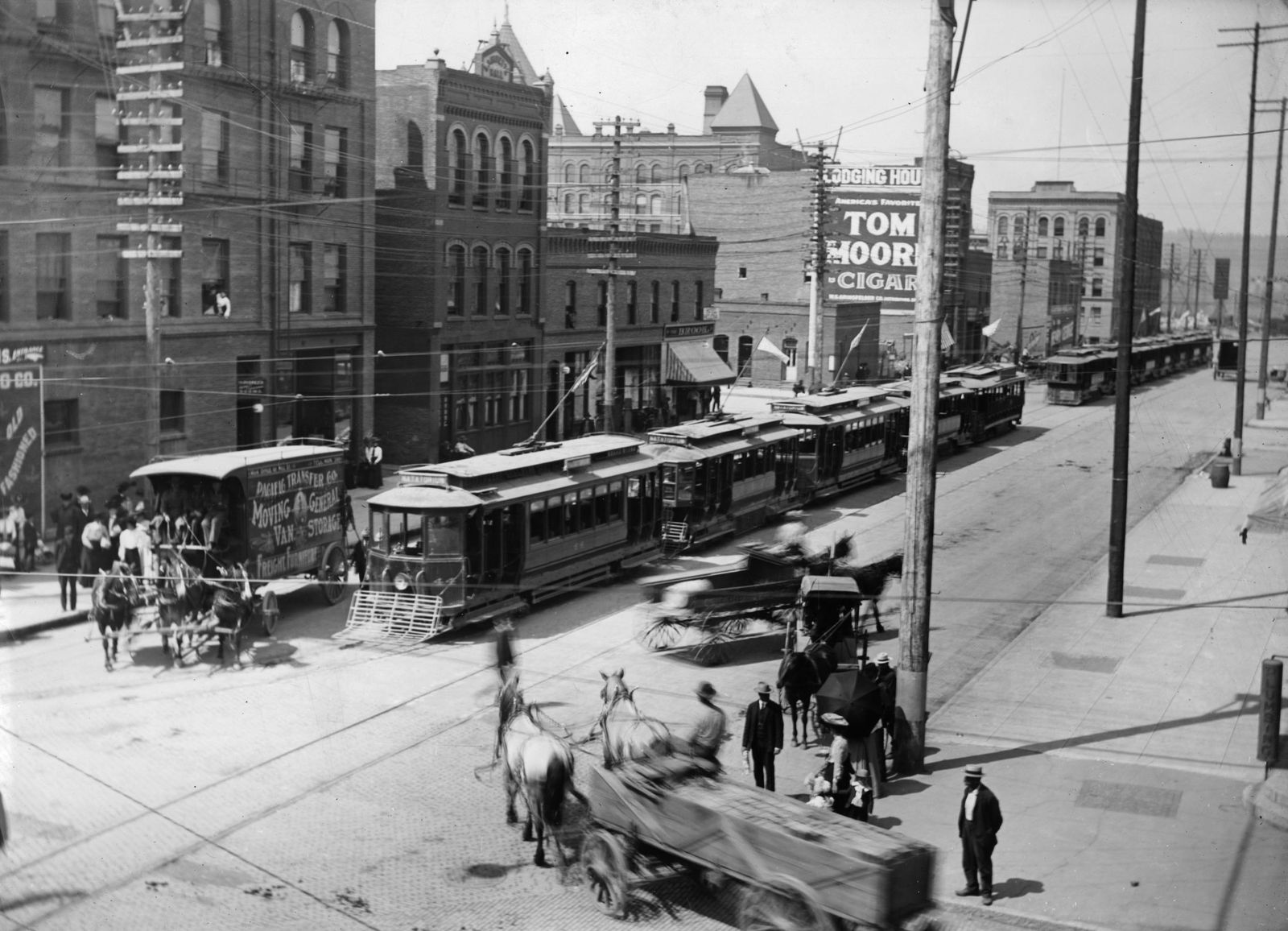
Spokane's streetcar era
Spokane’s streetcar era started in 1888 with the first horse drawn cars riding on tracks to a new neighborhood, Browne’s Addition. Developers hoped new service would encourage families to move a long mile’s walk from downtown. For nickel fare, workers could commute, housewives could get home with their groceries and maids and servants could get to the grand mansions of Spokane’s millionaires.
Section:Then & Now
Image One
Photo Archive
| The Spokesman-Review
Image Two
Jesse Tinsley
| The Spokesman-Review
Spokane’s streetcar era started in 1888 with the first horse drawn cars riding on tracks to a new neighborhood, Browne’s Addition. Developers hoped new service would encourage families to move a long mile’s walk from downtown. For nickel fare, workers could commute, housewives could get home with their groceries and maids and servants could get to the grand mansions of Spokane’s millionaires. The service was a hit and other operators jumped in, some using small steam locomotives to pull cars. Other land developers built new lines, like the Spokane Cable Railway, which used a below-ground cable to pull cars up the Monroe St. hill in 1890 to a new neighborhood called, appropriately, Cable Addition. Ross Park Street Railway Company was the first to adapt cars to electricity, which was abundant, thanks to the power plants on the Spokane River. By 1894, almost all streetcars were electric, powered by overhead power lines. Over the years, small lines built to push real estate sales were combined and bought out by Washington Water Power, which could provide the power, but also use the railway’s power poles to distribute electricity to new homes. WWP, now called Avista Corp., also took over Natatorium Park, a popular amusement facility which had a large pool, a baseball stadium, thrill rides and gardens. The streetcar to Nat Park was one of the most popular routes for many decades before the streetcars were phased out in the 1930s, replaced by buses.

